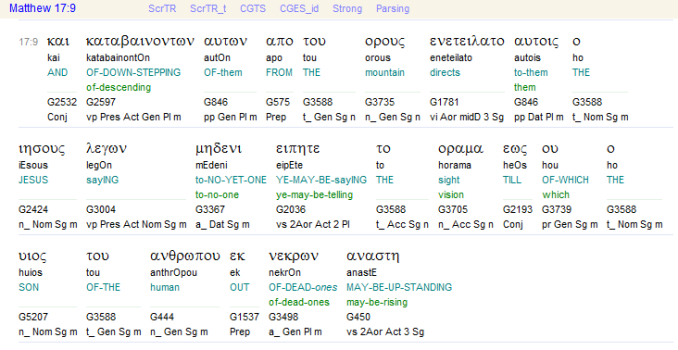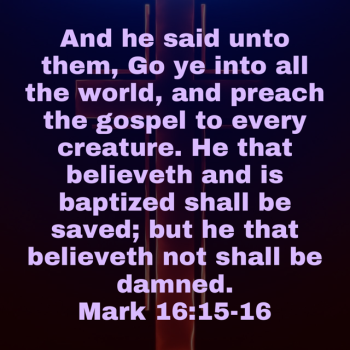I seem to stand alone in my position that it probably wasn't a vision. Even though some of our Bible translations use the word in the passage. The controversy seems to surround whether we can speak to the dead. Most say, "No." therefore it had to be a vision. Jesus was with the disciples for 40 days after his resurrection. Dead or alive? (or both) ???
Matthew 17:1-13
Mark 9:1-13
Luke 9:28-36
What are your thoughts?
[
First of all, Jesus was resurrected, so he was alive again. The Old Testament saints were all still in their graves. Remember
https://www.bing.com/ck/a?!&&p=eee2...ibGUgYW5kIHRhbGtpbmcgd2l0aCB0aGUgZGVhZA&ntb=1
The Bible
forbids the people of God from attempting to talk to the dead. The Old Testament teaches that believers are defiled by their attempts at communicating with the dead, a practice that is detestable to God. The New Testament instructs believers to seek guidance from God and his Spirit only. The Bible reveals that psychic experiences are real but demonic, and that deceiving sprits are counterfeits for the true Spirit of God. (see Lev. 19:31; 1 Chr. 10:13, 14; Ecc 5:9; Matt 24:24)
This was a vision. Moses and Elijah were talking with Jesus. Jesus was in the middle. Moses (representing the Old Testament Saints) was on one side, and Elijah (representing the Church, the New Testament Saints) was on the other side.. Moses pictured the faithful who lived before Christ, and Elijah pictured the “more than conquerors” who live after Christ, with Jesus being the “centerpiece,” as it were (Rom. 8:37).
What were Jesus, Moses, and Elijah talking about in this vision? They spoke about Jesus’ death, “his decease which he should accomplish at Jerusalem” (see Luke 9:31). Earlier Jesus had been discussing this very subject with his disciples (Matt. 16:21). Of course at the time of the vision, Peter, James, and John did not realize what Moses and Elijah represented. Moses looked forward to the death of Jesus at Calvary, and Elijah looks back to that event. Moses forsook the wealth of Egypt because he looked ahead to Christ and the Kingdom Age, whereas the Church class in the present age look back to Christ. Inferentially, the death of the Christ is included in the vision. If the Master had to have a cross, then so do the disciples who follow him (Matt. 16:24).
Even though Jesus spoke sternly to Peter (Matt. 16:23), laid the groundwork for his crucifixion, provided many details, and gave the transfiguration vision to the three apostles, the disciples were surprised when the Crucifixion actually took place. Nevertheless, these facts, experiences, and words entered into their minds like a computer. Information must at least be received— even if it is not acted upon or fully appreciated at the time—so that later the Holy Spirit can energize and call it to remembrance.
Because Jesus could perform so many wonderful miracles, including the raising of the dead, the disciples and others thought that he could not be put to death under such humiliating circumstances, but they—and we—have to be educated to God’s way of thinking. God’s plan was something new; we are a New Creation. That is why Peter wrote in his epistle, “Beloved, think it not strange concerning the fiery trial which is to try you, as though some strange thing happened unto you” (1 Pet. 4:12). Earlier, at Jesus’ crucifixion, Peter did think the trial was strange, but he learned his lesson.



